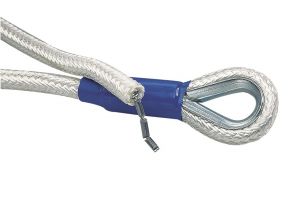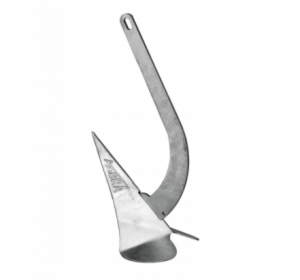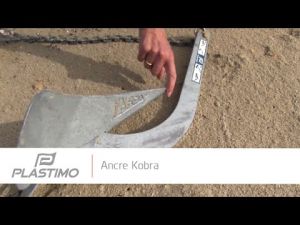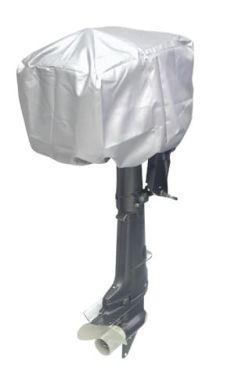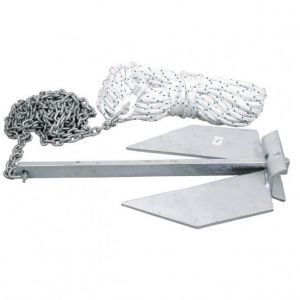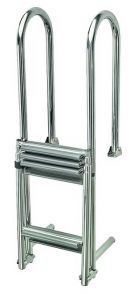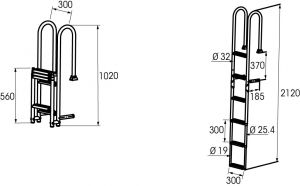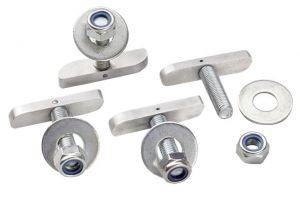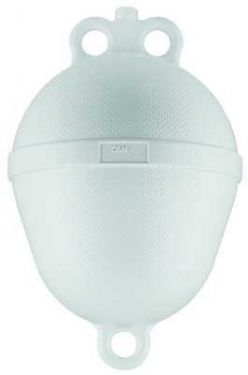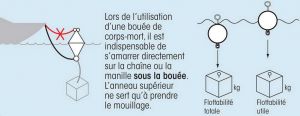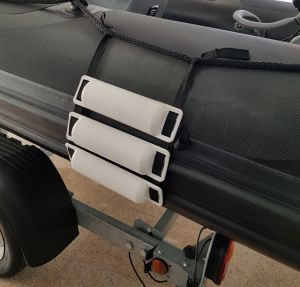Anchoring and Docking
Whether you're anchoring in port or in a cove, it's important to use the right equipment, no matter where you're preparing to moor your boat. Whether you're dropping anchor, anchoring in port or mooring in a trunk, you'll find all the essential mooring equipment you need on our site. For safe anchoring in the best possible conditions, equip yourself with a boat anchor, mooring buoys, fenders and a boat ladder. Everything you need for a successful mooring is available for sale online at Nautisports.
FENDER
When the boat is immobilized at sea after anchoring, it's important to protect it from potential impacts. A}is a type of bumper used on boats and ships to protect them from collisions. Fenders are designed to absorb the impact of shocks and prevent damage to the boat's hull. They are often made of rubber or plastic. Fenders are often very useful when mooring your boat. In this case, they help prevent your boat from colliding with the dock or neighboring boat. A fender is designed to be fitted to the hull of the boat in such a way that it can be easily removed and replaced if necessary. For this reason, the preferred means of attaching a fender is by rope. Generally speaking, at least three fenders are needed on each side of the boat to protect the bow, center and stern.
Fenders, also known as boat fenders, are an important element of boat safety and should be inspected regularly to ensure they are in good working order and, above all, properly inflated. A poorly inflated fender will absorb shocks poorly. When looking for a fender, make your choice according to its size, material and shape, as well as its longevity and resistance to damage. A well-chosen fender guarantees successful mooring and anchoring, while an unsuitable fender can cause damage to your boat or other boats in the area. It's well worth investing in high-quality fenders that will last for many years.
BOAT ANCHOR
Once you've found a safe shelter for your vessel, it's important to have the best mooring products to tie up your boat in the best conditions. For this, the essential item you'll need first and foremost is a}of high quality. A boat anchor should be chosen according to the type of ground you're going to anchor in, and the length of time you're going to anchor: anchoring can be temporary or permanent. An anchor is a heavy piece of steel that enables sailors to stabilize their boat in a specific location. Thanks to the different types of anchor available, sailors can anchor on rocky, muddy or sandy bottoms. Anchoring equipment is at the best price on Nautisports. You'll find many top brand products in stock, available for fast delivery. Proper anchoring is essential for the sailor.
BOAT SCALE
Once you've moored your boat to the quayside or are at anchor, you're bound to need to leave your boat at some point. Whether it's to get into the water, return to shore or access your dinghy. A is essential to facilitate access on board, particularly to help you climb back aboard your boat alone.
A boat ladder is part of the mooring equipment category, but it is also part of a boat's safety equipment. That's why it's important to consider its location on board. A boat ladder must be easily accessible and visible. To avoid any incidents, it should not be installed in a place where it could impede movement on your boat. It is generally placed at the stern or side of the boat, depending on whether you own a sailboat or a motorboat. A boat ladder is attached with rope, usually a bungee cord.
A boat ladder is very similar to a pool ladder. However, they come in many different forms. If you're about to buy a boat ladder, it's important to consider the size of your boat, the number of people you're taking on board, and the intended use. Boat ladders can be made of aluminum, stainless steel or nylon, and can be fixed or removable. Choose your boat ladder from among our many models. Nautisports offers a complete range of boat ladders available for delivery: stainless steel boat ladders, folding boat ladders, accommodation ladders or telescopic ladders, as well as emergency ladders.
MOORING BUOY
Now that you've parked your boat, it's time to move on to anchoring. In many cases, you may need to moor your boat to a "mooring buoy" anchor_text="anchor buoy" template="category/widget/link/link_inline. phtml" id_path="category/298"}}. A mooring buoy will often indicate the presence of a mooring area in a harbor, and provide an anchoring point for mooring cables and boat lines. This device both indicates that a vessel is at anchor, and facilitates parking. If you're going to be at anchor for some time in a particular area, it's safer to own an anchor buoy yourself.
Anchorage areas usually offer moorings, but these are often already occupied by other vessels. So it's best to own your own mooring buoy if you want to be able to park year-round in a municipal marina or anchorage area. Please note that some protected anchorage areas prohibit you from anchoring.
MARKER BUOYS
Marker buoys}play an essential role in ensuring the safety of bathing areas and water sports activities. They are used to delimit shoreline protection zones and to mark cross-channels that are off-limits to swimmers. These buoys, generally yellow in color, help users understand the rules and limits to be respected. Depending on the regulations in force, marker buoys can have different shapes and sizes, depending on their specific location. Spherical buoys are used to mark the outer limit of the 300-metre strip of coastline, while cylindrical and conical buoys mark the lateral limits of cross-channels. Smaller spherical buoys are used to mark restricted areas within the coastal strip. The lifespan of a buoy varies according to a number of factors, but a quality buoy can last an average of 3 to 5 years with proper maintenance. It's important to install and secure buoys correctly to guarantee their effectiveness.
PONTOON FENDER
Pontoon fenders}are protective devices installed along pontoons and docks to prevent damage caused by contact with boats. They absorb shocks and reduce the risk of structural damage. They require regular maintenance to ensure their effectiveness. Their purpose is to guarantee the safety of port infrastructures and boats.
DAVITS AND HAWSEPIPES
The are fittings accessories for anchoring your boat. The davit, generally made of stainless steel, is located forward of the bow and supports the anchor. It is designed to facilitate anchoring by guiding and locking the anchor chain. The hawse plate, also made of stainless steel, is located at the base of the davit, at the end of the delphinière, to hold the anchor in place and protect the boat's bow.
































































































